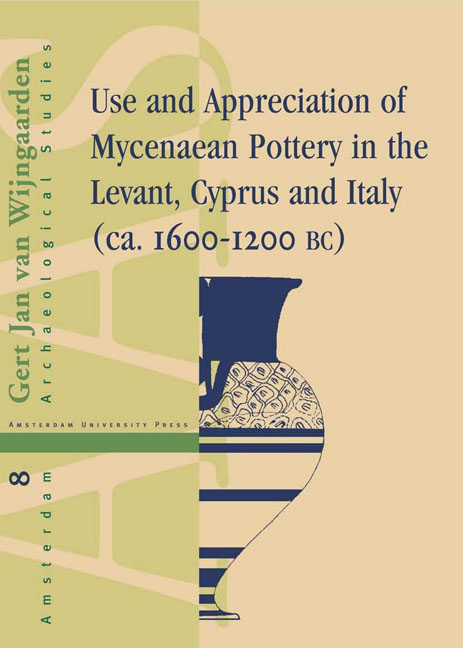14 - Mycenaean Pottery in the Central Mediterranean: Introduction
Published online by Cambridge University Press: 10 February 2021
Summary
PREVIOUS RESEARCH
The fifty-three sites in the central Mediterranean at which Mycenaean pottery has been found are situated in a large area encompassing the Italian peninsula and the two largest islands in the Mediterranean, Sicily and Sardinia (Map 10). Malta and the Aeolian islands are also included. In 1877, L. Mauceri described two amphoroid jars from a tomb near Syracuse which had been found in 1871, without knowing they were Mycenaean. P. Orsi discovered Mycenaean pottery on several Sicilian sites and commented on their historical significance. The large quantities of Late Helladic pottery in the upper stratum of the site at Scoglio del Tonno in Taranto (site no. 314), excavated by Quagliati in 1899-1900, made it clear that southern Italy had known important Mycenaean connections.Fimmen mentioned five sites in Sicily and three on the mainland where Mycenaean pottery had been found, while T.J. Dunbabin added another to both regions. According to Dunbabin, the ceramic evidence and that for the introduction of fibulae and a new type of tholos tomb pointed to the presence of permanent Mycenaean settlements on Sicily.
In the 1940s and 1950s L. Bernabò Brea and M. Cavalier started several important excavations on the Aeolian islands, north of Sicily. The Aegean pottery of Filicudi (site no. 321), Lipari (site no. 325) and Panarea (site no. 324) was discussed by Taylour in his overview of Mycenaean pottery in Italy. He stated that much of the Aegean pottery was early in comparison with most other sites: LH I and LH II wares are present at these islands in quantities that equal the LH IIIA and LH IIIB pottery. Taylour also discussed the Mycenaean pottery from Scoglio del Tonno (site no. 314), indicating stylistical affinities with the islands of Rhodes and Cyprus. The excavation of Porto Perone (site no. 313), also in the region of Taranto, did not only reassert the importance of this area in Mycenaean times. It also provided a better understanding of the stratigraphical sequences in which the Mycenaean pottery in Apulia occurred.
- Type
- Chapter
- Information
- Use and Appreciation of Mycenaean Potteryin the Levant, Cyprus and Italy (1600-120O BC), pp. 203 - 206Publisher: Amsterdam University PressPrint publication year: 2002



